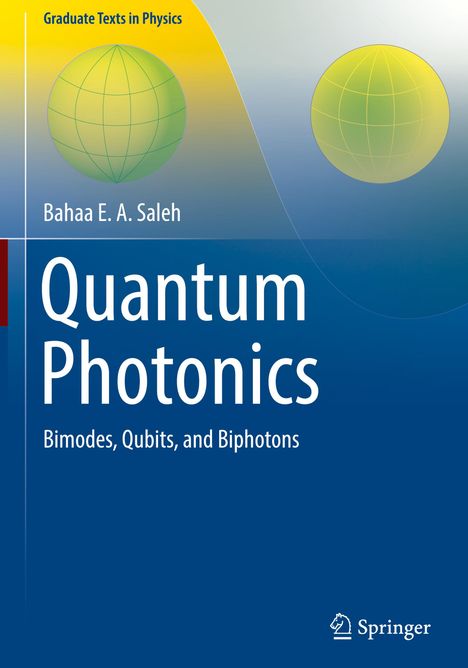Bahaa E. A. Saleh: Quantum Photonics, Gebunden
Quantum Photonics
Buch
- Bimodes, Qubits, and Biphotons
lieferbar innerhalb 2-3 Wochen
(soweit verfügbar beim Lieferanten)
(soweit verfügbar beim Lieferanten)
Aktueller Preis: EUR 85,33
Verlängerter Rückgabezeitraum bis 31. Januar 2026
Alle zur Rückgabe berechtigten Produkte, die zwischen dem 1. bis 31. Dezember 2025 gekauft wurden, können bis zum 31. Januar 2026 zurückgegeben werden.
Versandkosten
(United States of America): EUR 19,90
- Verlag:
- Springer, 06/2025
- Einband:
- Gebunden
- Sprache:
- Englisch
- ISBN-13:
- 9783031891205
- Artikelnummer:
- 12313511
- Umfang:
- 496 Seiten
- Gewicht:
- 1119 g
- Maße:
- 260 x 183 mm
- Stärke:
- 33 mm
- Erscheinungstermin:
- 3.6.2025
- Hinweis
-
Achtung: Artikel ist nicht in deutscher Sprache!
Klappentext
Chapter 1: Bimodal Systems.- Chapter 2: Optical Modes.- Chapter 3: Random Optical Modes.- Chapter 4: Quantum Bits.- Chapter 5: Quantum Information Processing.- Chapter 6: Photons.- Chapter 7: Single-Photon Optics.- Chapter 8: Biphoton Optics.- Chapter 9: Quantum Photonic Sensing.
Biografie
Professor Bahaa E.A. Saleh promovierte 1971 an der Johns Hopkins Universität, Baltimore, im Fach Elektrotechnik. Nach unterschiedlichen Forschungs- und Lehrtätigkeiten u.a. an der Universität von Santa Catarina in Brasilien, der Universität von Kuwait, dem Max-Planck-Institut für Biophysikalische Chemie in Göttingen, der Columbia Universität sowie schließlich der Universität von Wisconsin in Madison, wechselte er 1994 an die Universität Boston, wo er Direktor des Instituts für Elektro- und Computertechnik ist. Darüber hinaus ist er Ehrenmitglied des IEEE sowie der Optical Society of America. Professor Salehs Forschung umfasst die Gebiete Bildverarbeitung, optische Signalverarbeitung, statistische Optik, optische Kommunikation und Sehkraft.
Bahaa E. A. Saleh
Quantum Photonics
Aktueller Preis: EUR 85,33
